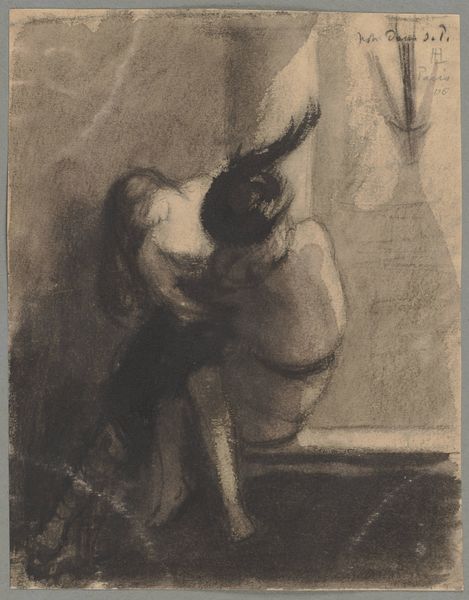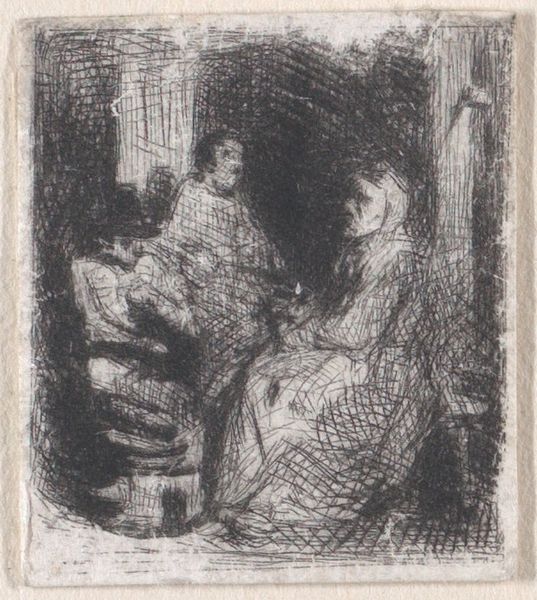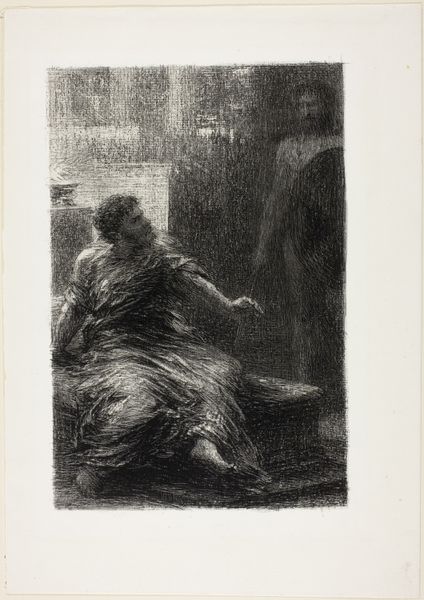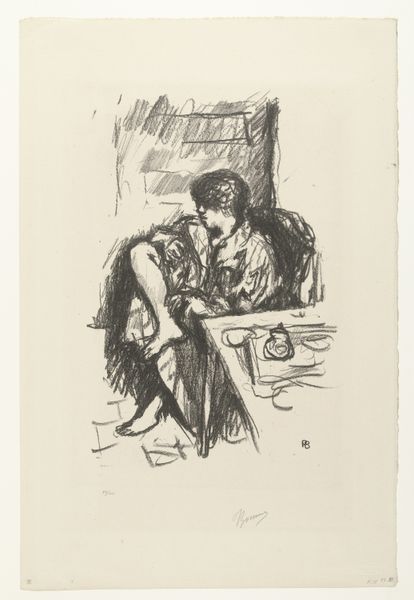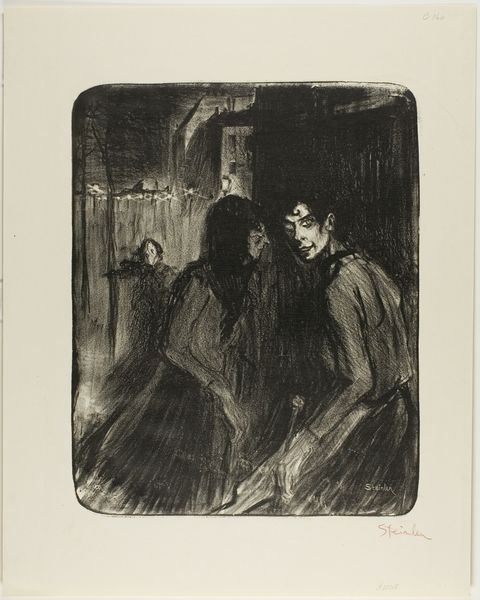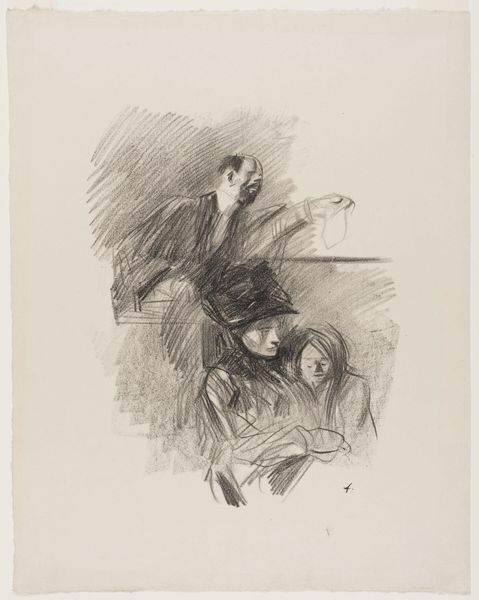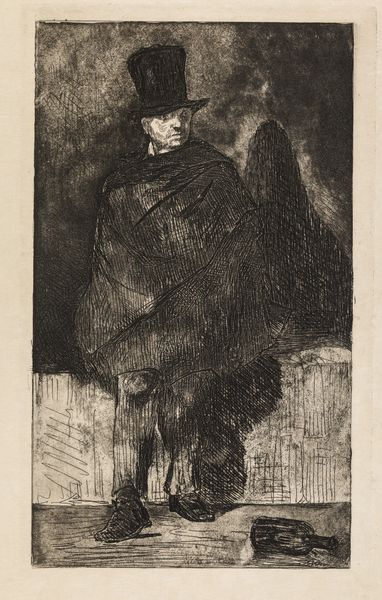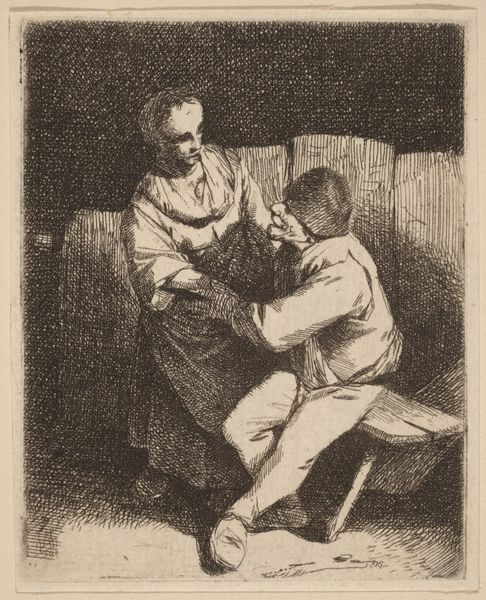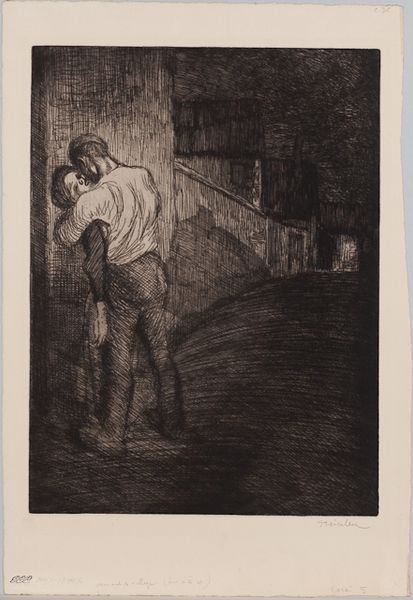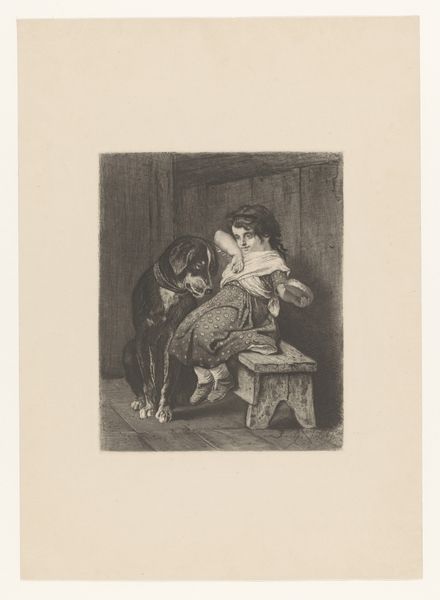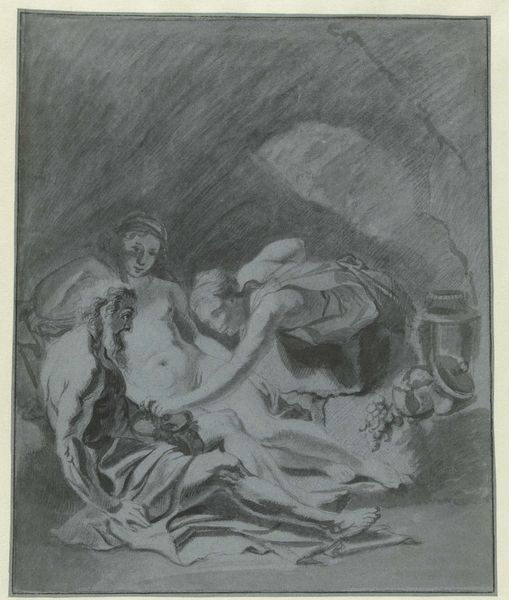
drawing, print, graphite
#
portrait
#
drawing
# print
#
charcoal drawing
#
pencil drawing
#
graphite
#
graphite
Dimensions: plate: 19.2 × 15 cm (7 9/16 × 5 7/8 in.) sheet: 47.9 × 33 cm (18 7/8 × 13 in.)
Copyright: National Gallery of Art: CC0 1.0
Curator: Welcome. Here we have Gioacchino Banfi’s, "Seated Man in Sixteenth-Century Costume," created circa 1878. It appears to be a graphite or charcoal drawing. Editor: My first impression is the subdued yet dramatic quality of the piece. There’s a distinct contrast in textures between the subject and background. Curator: The use of hatching and cross-hatching in the background creates a definite sense of depth and shadow, framing the figure. Editor: Speaking of the figure, look closely at the subject's attire, presumably "sixteenth-century costume." The pleats and gathers, indicated with economical use of graphite, create a texture, as does the light as it falls and catches there. What are your thoughts on the artist’s intention in focusing on the clothing? Curator: Perhaps an engagement with the past, and with earlier modes of representation. The very choice of period costume hints at a preoccupation with history and its visual codes. Semiotically, the clothing signifies more than mere fabric; it evokes a historical period and associated power structures. Editor: True, the drawing's materiality gives the image a ghostly air. One is reminded that drawings, and graphite marks on paper, are actually derived from specific geological sites and industrial processes. Curator: I agree that the use of the pencil provides a graphic immediacy. Consider how Banfi deploys line to create not just form but also a palpable mood of introspection. Note also the geometry created through light and shade as the seated man reclines in that space. Editor: Banfi, while working in relatively accessible materials such as graphite, and producing works of art for a buying public with a potentially vast range of interests, shows us something we can easily interpret and appreciate across class divides. It is the quotidian nature of graphite that really makes Banfi's drawing so interesting to me. Curator: It seems that this seemingly straightforward drawing opens avenues into the play of historical representation and material production, proving even simple artworks can encapsulate complex ideas. Editor: Exactly! A simple sketch becomes a potent testament to materials, production and artifice across historical periods and socioeconomic realities.
Comments
No comments
Be the first to comment and join the conversation on the ultimate creative platform.
